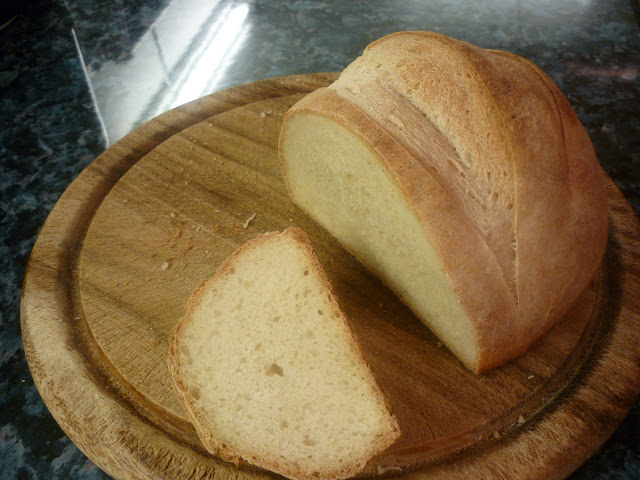Do you know what bread is?
Think carefully, it's a difficult question.
I'm pretty sure I do. But I only learnt recently, so don't feel bad.
If you read my last post, you'll see that I've recently come into possession of the book Ratio by Michael Ruhlman. I'll try my best not to get geeky on you, but the more I read, the more I love it. There have been points where I've almost laughed out loud by how much a paragraph sounds like something my dad would say. That's a good thing - there aren't enough teachers like my dad in the world.
Well anyway, although I'm not intending to follow the book like a recipe, I decided I might as well start at the beginning, and then deviate when I felt like. So I'm going to start with bread.
It does seem like a sensible starting point, when you think about it. It pretty much has the least (and simplest) ingredients of any baked good. And it probably came about earlier in history than most others (don't quote me on this, I'm assuming).
Either way, I'm starting with bread. If you don't like it, wait til the next post.
Now I know you maths-brains will be waiting for this. You know what I'm talking about. You want the bread Ratio. Here it is:
5 flour : 3 water
That's it.
Well, almost. Of course anyone who's made bread before will already know that a vital ingredient is missing - the raising agent. For now, I'm going with yeast. I'll openly admit I know less than nothing about other raising agents, but it seems right to acknowledge there are others, and that I'm ignoring them (at least for now). I'll also tell you now that I use dried instant yeast, which comes in little sachets and often gets called fast-acting or breadmaker yeast. I use it because it's the easiest to buy and least hassle to use.
From what I've learnt, the amount of yeast is not quite as vital as the flour:water ratio. That's because yeast takes time to do it's thing, so the amount will just affect the speed. You can put in loads of yeast, and it will work quickly, or a tiny bit and it will work slowly. But the result will be largely the same. (A slower rise is said to improve the flavour, but I'll get to that later).
But again, the number I have kept coming across in my 'research' (elaborated googling) is the yeast should be about 1% of the weight of the flour, for an average speed rise. This roughly translates as about a teaspoon of instant yeast per 500g of flour. So if you want an all-encompassing ratio, then here goes:
500 flour: 300 water: 1 yeast
Better? Good.
Link to Part 2




No comments:
Post a Comment